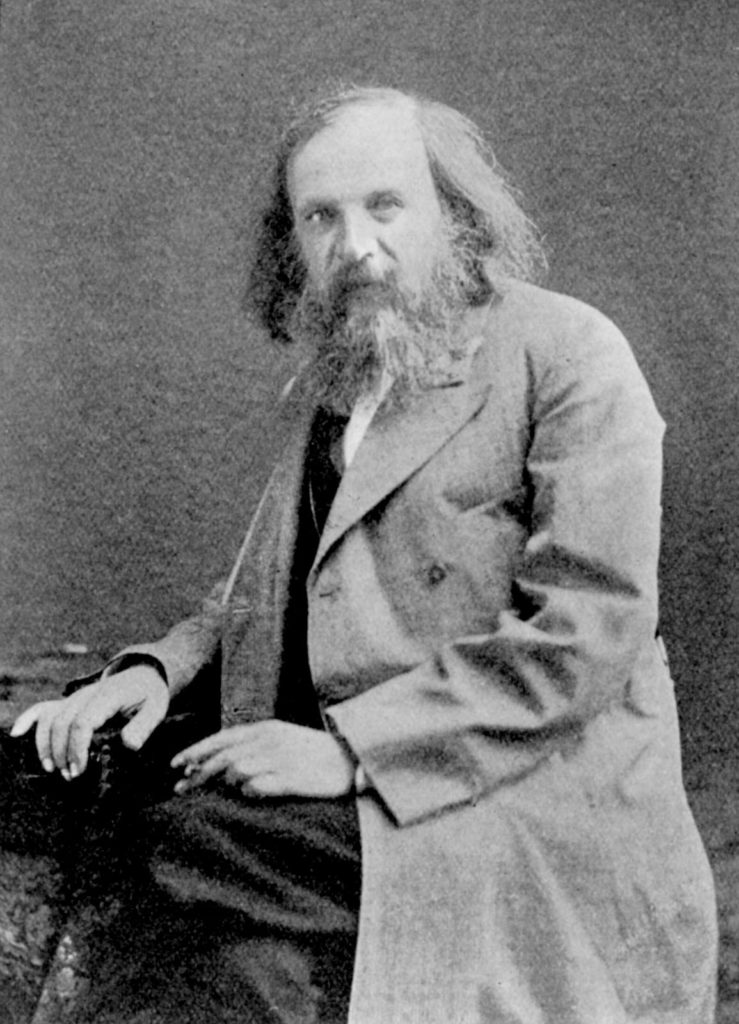
Dmitri Mendeleev (1834 – 1907) was a Russian chemist who is most famous for publishing his periodic table of elements. The period table is one of the most recognizable symbols in science.
Mendeleev was born in the Russian province of Siberia in 1834, the youngest of seventeen siblings. At the age of sixteen Mendeleev moved with his family to the the Russian capitol of St. Petersburg and enrolled in his father’s old school, St Petersburg’s Main Pedagogical Institute. At age 21 he got a teaching job in the Crimea but soon returned to St. Petersburg to study for a master’s degree in chemistry from the University of St. Petersburg which he obtained in 1856.
Mendeleev was becoming more passionate about science and more concerned that Russia was falling behind Germany in the field. He believed improving Russian educational textbooks was one way to close the gap. In 1861 he published the 500-page textbook Organic Chemistry which won him the Demidov Prize of the Petersburg Academy of Sciences. He continued to be a a teacher of chemistry and write additional textbooks over the next few decades.
During his time teaching and writing textbooks Mendeleev began to notice patterns and relationships among the known elements. He found many similar properties in groups of elements such as the halogens and the alkaline earth metals. He noticed the atomic weight’s of the elements could be used to arrange elements within groups, and also to arrange groups themselves. In 1869 he published publish The Relation between the Properties and Atomic Weights of the Elements, revealing his periodic table to the world.
Mendeleev’s periodic table was impactful for its predictive power. Due to its ordering, it predicted that some of the atomic weights of known elements may be wrong. It also predicted the existence of unknown elements and it predicted what properties these elements would possess. Both of these predictions ended up being true.
Mendeleev received substantial fame and recognition for his periodic table. In 1905, the British Royal Society awarded him its highest honor, the Copley Medal. The same year he was elected to the Royal Swedish Academy of Sciences. He died just after the turn of the century in 1907 from the influenza virus. Element number 101 is named Mendelevium in his honor.